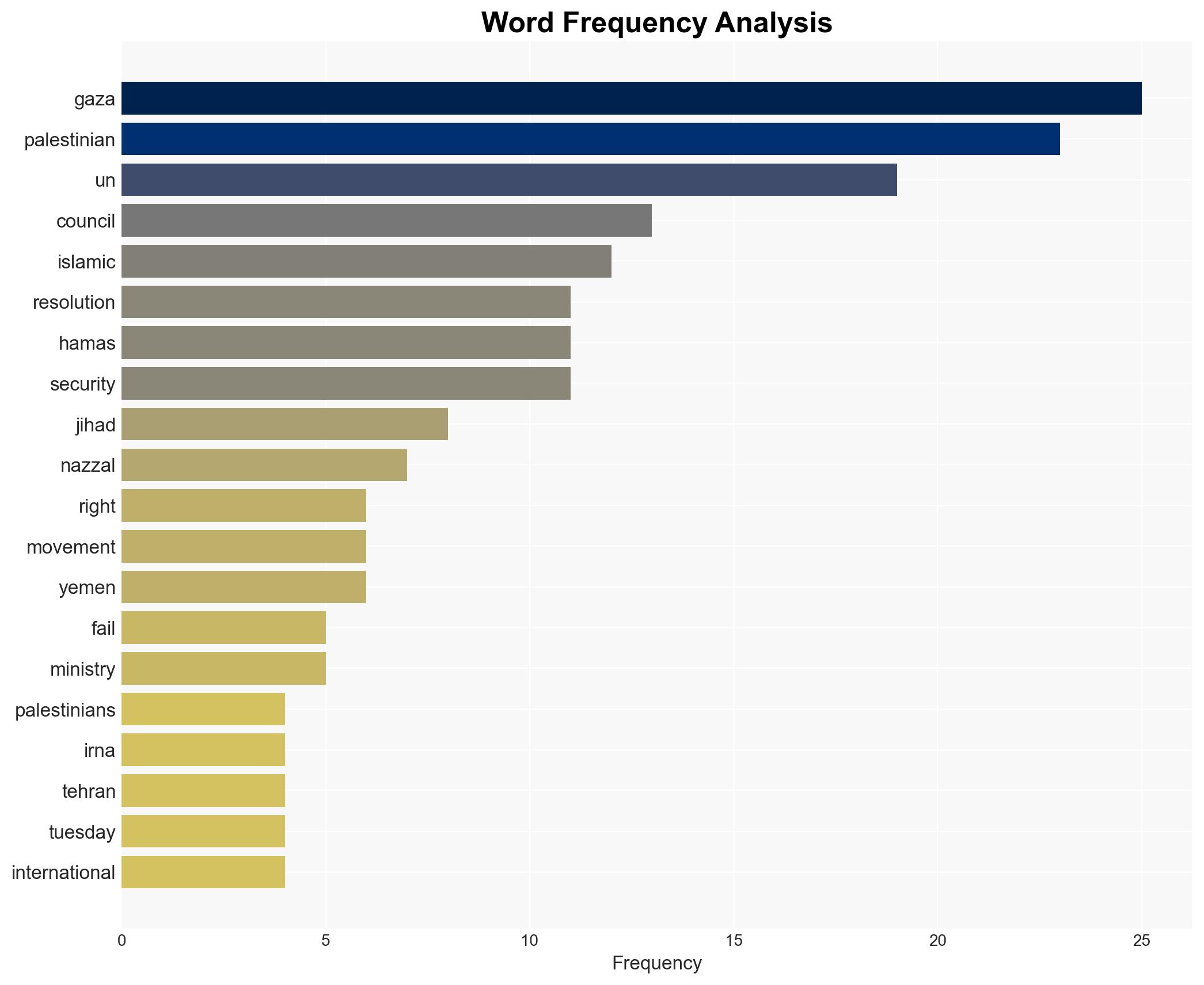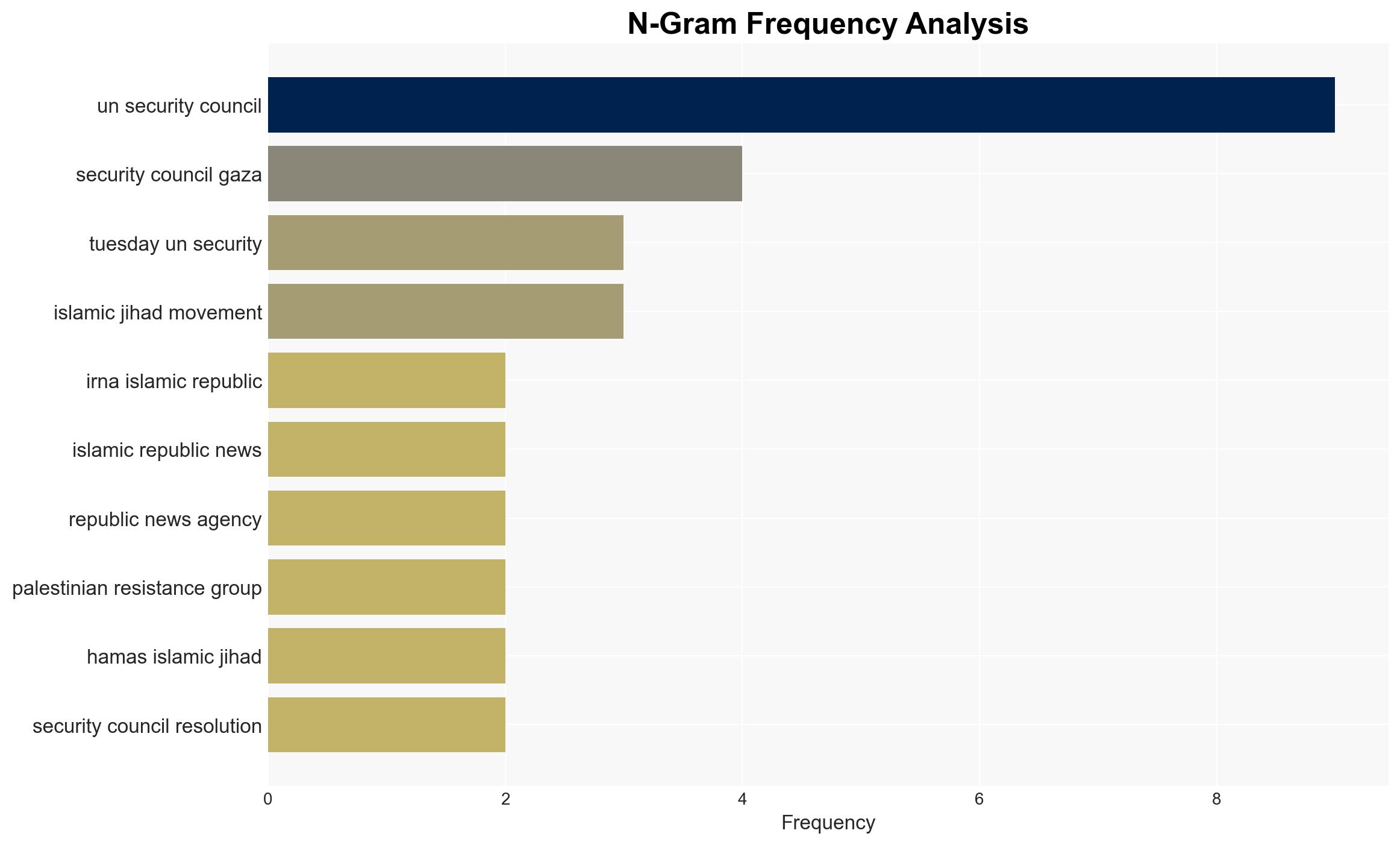Resistance groups say UNSC resolution on Gaza fails to uphold Palestinians’ rights – Globalsecurity.org
Published on: 2025-11-20
AI-powered OSINT brief from verified open sources. Automated NLP signal extraction with human verification. See our Methodology and Why WorldWideWatchers.
Intelligence Report:
1. BLUF (Bottom Line Up Front)
The UN Security Council resolution on Gaza, criticized by Palestinian resistance groups, is unlikely to achieve its intended stabilization goals due to lack of local support and perceived imposition of international control. The most supported hypothesis is that the resolution will exacerbate tensions rather than mitigate them, with a moderate confidence level. Recommended actions include diplomatic engagement with regional stakeholders to address grievances and prevent escalation.
2. Competing Hypotheses
Hypothesis 1: The UNSC resolution will stabilize Gaza by facilitating international oversight and disarmament, leading to a sustainable ceasefire.
Hypothesis 2: The resolution will fail to stabilize Gaza, as it is perceived as undermining Palestinian rights and sovereignty, leading to increased regional tensions.
The second hypothesis is more likely due to the strong opposition from key Palestinian groups such as Hamas and Islamic Jihad, who view the resolution as an imposition rather than a cooperative effort. The lack of local buy-in and the historical context of failed international interventions in similar scenarios further support this assessment.
3. Key Assumptions and Red Flags
Assumptions: The resolution’s success relies on the cooperation of local factions and the effective implementation of disarmament measures. It assumes that international forces will be perceived as neutral and beneficial.
Red Flags: Strong rhetoric from Hamas and Islamic Jihad against the resolution indicates potential for increased resistance. The framing of the resolution as an “American coup” suggests a high risk of political manipulation and misinformation campaigns.
4. Implications and Strategic Risks
The resolution’s failure could lead to a resurgence of hostilities, undermining regional stability. Political risks include the erosion of trust in international bodies like the UN. Economically, continued instability could deter investment and humanitarian aid. Informationally, the narrative of foreign imposition may fuel extremist propaganda.
5. Recommendations and Outlook
- Engage with Palestinian factions to address their concerns and incorporate their input into the resolution’s implementation.
- Facilitate dialogue between Israel and Palestinian representatives to build trust and ensure mutual commitment to peace efforts.
- Best-case scenario: Successful integration of local perspectives leads to a stable ceasefire and gradual disarmament.
- Worst-case scenario: Escalation of violence and regional instability due to perceived foreign intervention.
- Most-likely scenario: Continued tension with sporadic violence and limited progress towards lasting peace.
6. Key Individuals and Entities
Mohammad Nazzal (Hamas Politburo Member), Muhammad al-Hajj Mussa (Islamic Jihad Spokesman), Donald Trump (Former U.S. President)
7. Thematic Tags
Structured Analytic Techniques Applied
- ACH 2.0: Reconstruct likely threat actor intentions via hypothesis testing and structured refutation.
- Indicators Development: Track radicalization signals and propaganda patterns to anticipate operational planning.
- Narrative Pattern Analysis: Analyze spread/adaptation of ideological narratives for recruitment/incitement signals.
Explore more:
Counter-Terrorism Briefs ·
Daily Summary ·
Support us





